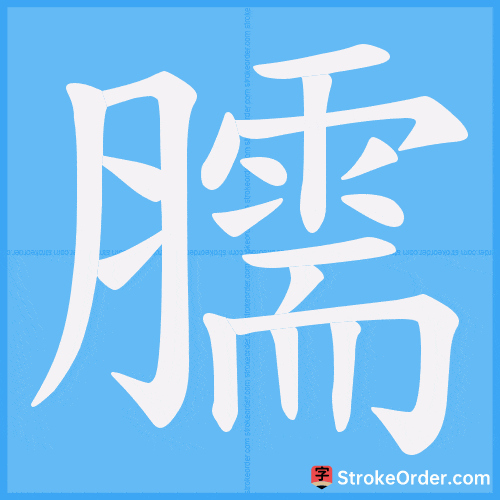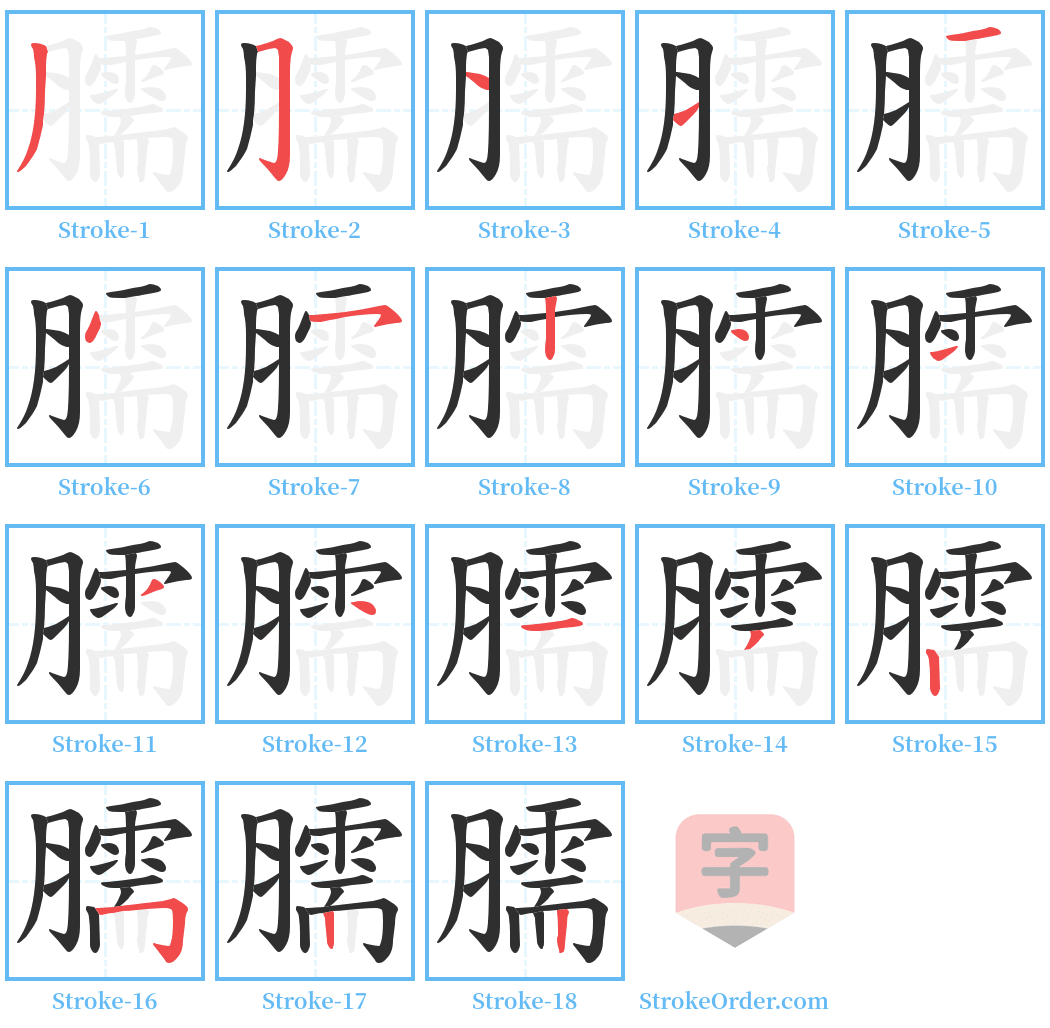臑 Stroke Order
Animated Stroke Order of 臑

Stroke Order Diagrams for 臑

Information of 臑
Pinyin
nào
Radical
月
Strokes
18 strokes
Usage
★★
Definition
臑 [nào]
名词:
1. The lower half of the forelimbs of livestock.
2. In traditional Chinese medicine, it refers to the bulging muscle from the shoulder to the inner side of the elbow, near the axilla.
名词:
1. The upper limb of a person. It also refers to a point on the arm, known as "羊矢穴" (sheep excrement hole).
2. According to another interpretation, it indicates the upper part of the arm. In sheep and pigs, it is referred to as 臑; in humans, it is referred to as 肱 (humerus).
3. The upper part of the forelimb of livestock.
动词:
To boil or cook (通“臑”).
---
臑 [ér]
动词:
1. Same as "胹" (to boil or cook until tender).
2. For further reference, see "nào".
---
Notes:
1. In reference to livestock, it typically indicates the forelegs of sheep, pigs, etc. It later broadly refers to the upper limbs of humans or the forelimbs of animals.
2. A classical reference explains: "The arm in humans is called 臑 in sheep and pigs."
3. In the "Rites of Zhou", it’s noted as: "The Sima who raises sheep, the right fat, the thigh doesn't rise, shoulder and arm 臑".